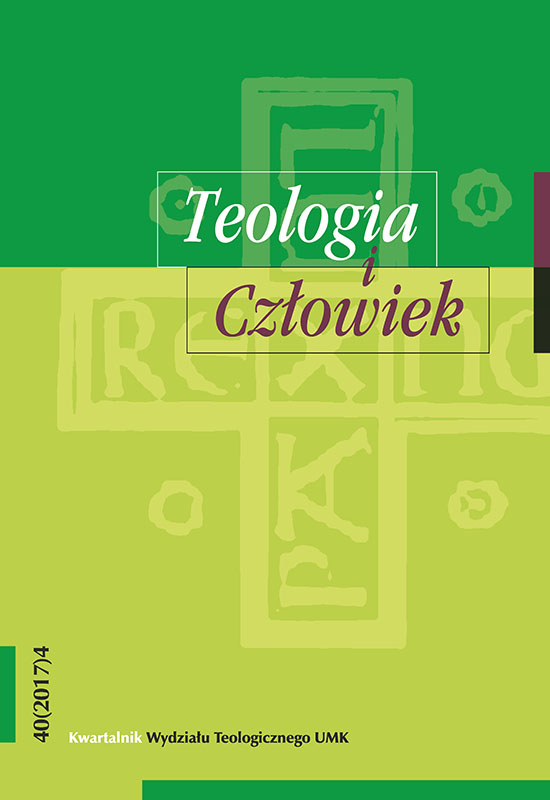Disappearing Community. The Catholic Chaldean Church in Iran after the Iranian Revolution of 1979
DOI:
https://doi.org/10.12775/TiCz.2017.056Keywords
Catholic Chaldean Church, Christians, Assyrians, Islamic Republic of Iran, revolution, IslamAbstract
By focusing on the quantitative changes that occurred among the members of the Catholic Chaldean Church after the Iranian Revolution of 1979, the article tries to depict a broader context of the Christian presence in the Islamic Republic of Iran. It presents the socio-cultural situation of the Christians belonging to the Chaldean Church before the revolution, underling their social and cultural activity, highlights the changes introduced by the revolution both in the attitudes toward the Christians and the opportunities given them to continue religious and political initiatives and, finally, it shows the present condition of the Church experiencing the decline of the Church members caused by migrations.
References
„Annuario Pontificio”, Città del Vaticano 1981, 1991, 2000, 2002, 2004, 2010, 2015.
Āszurijān, H., Āszurijān-e Irān, mellati ke bājad az nou szenācht, http://assyrianstudies.org/.
Backer, A.H., Revival and awakening. American evangelical missionaries in Iran and the origins of Assyrian nationalism, Chicago–London 2015.
Bajt-Mansur, W., Namunehā-ji az āsār-e bāstāni-je Āszurihā-je Irān, Tehrān 1377 (=1998).
Balbont, L., Zakazany język, w: Czarna księga prześladowań chrześcijan w świecie, red. J.-M. di Falco, T. Radcliffe, A. Riccardi, tłum. B. Baran, J. Gorecka-Kalita, M. Szewc-Osiecka, Poznań 2015, s. 303–310.
Barry, J., "This is not Our Country": Declining Diversity in the Islamic Republic of Iran, „The Muslim World” 105 (2015) 3, s. 281–298.
Bradley, M., Too Many to Jail. The Story of Iran’s New Christians, Oxford – Grand Rapids 2014.
Christians in Iran. A brief description, http://www.oasiscenter.eu/articles/christians-in--the-muslim-world/2015/06/11/christians-in-iran [dostęp: 10.06.2017].
Ettelā’āti czand dar bāre-je Āszurihā, Markaz-e pażuheszhā-je Dżomhuri-je Eslāmi 1377 (=1998).
Healey, J., "The church across the border": The Church of East and its Chaldean branch, w: Easter Christianity in the Modern Middle East, red. A. O’Mahony, E. Loosley, London–New York 2010, s. 41–55.
Heretics. Iran’s Religious Minorities, Small Media 2014, https://smallmedia.org.uk/work/heretics-irans-religious-minorities [dostęp: 10.06.2017].
Issaji, J., Tadżrobe āmuzande ast, „Margā” nr 23, 15 października 1982, s. 11.
Laingen, B., Yellow ribbon. The secret journal of Bruce Laingen, Washington–New York–London 1992.
Macuch, R., Assyrians in Iran, i. The Assyrian community (Āšūrīān) in Iran, w: Encyclopaedia Iranica, II/8, s. 817–822.
Meram, T., Dar gozaszte osqof-e azam Szamuil Szouriz, „Marga” nr 16, 15 sierpnia 1981, s. 15–16.
Naby, E., The Assyrians of Iran: Reunification of a Millat 1906–1914, „International Journal of Middle East Studies” 8 (1977) 2, s. 237–249.
Persya. Rzut oka na dzieje misyi. Wymordowanie 4000 chrześcijan i arcybiskupa Sontaga w Urmii, „Misye katolickie”, r. 38 (styczeń–luty), 1919, s. 58–59.
Prorok, C. V., Hemmasi, M., Demographic Changes in Iran’s Officially Recognized Religious Minority Populations Since the Islamic Revolution, „African and Asian Studies” 1 (2002) 2, s. 63–86.
Rzepka, M., Payām-e Āšuriyān – the Assyro-Chaldean publications in the Persian language in post-revolutionary Iran, „Orientalia Christiana Cracoviensia” 2 (2010), s. 93–99.
Rzepka, M., New Christians in the Islamic Republic of Iran: Regional and Global Implication, Shifting Identities: Changes in the Social, Political, and Religious Structures in the Middle East, red. M. Raheb, Diyar Publisher 2016, s. 183–194.
Sanasarian, E., Religious Minorities in Iran, Cambridge 2000.
Wilmshurst, D., The Ecclesiastical Organisation of the Church of the East 1318–1913, Louvain 2000.
Wilmshurst, D., The Martyred Church. A history of the Church of the East, London 2011.
Woźniak, M., Współcześni Asyryjczycy i Aramejczycy. Bliskowschodni chrześcijanie w poszukiwaniu tożsamości narodowej, Łódź 2014.
Yonan, G., Assyrer heute: Kultur, Sprache, Nationalbewegung der aramäisch sprechenden Christen im Nahen Osten; Verfolgung und Exil, Wien–Hamburg 1978.
Downloads
Published
How to Cite
Issue
Section
License
CC BY ND 4.0. The Creator/Contributor is the Licensor, who grants the Licensee a non-exclusive license to use the Work on the fields indicated in the License Agreement.
- The Licensor grants the Licensee a non-exclusive license to use the Work/related rights item specified in § 1 within the following fields: a) recording of Work/related rights item; b) reproduction (multiplication) of Work/related rights item in print and digital technology (e-book, audiobook); c) placing the copies of the multiplied Work/related rights item on the market; d) entering the Work/related rights item to computer memory; e) distribution of the work in electronic version in the open access form on the basis of Creative Commons license (CC BY-ND 3.0) via the digital platform of the Nicolaus Copernicus University Press and file repository of the Nicolaus Copernicus University.
- Usage of the recorded Work by the Licensee within the above fields is not restricted by time, numbers or territory.
- The Licensor grants the license for the Work/related rights item to the Licensee free of charge and for an unspecified period of time.
FULL TEXT License Agreement
Stats
Number of views and downloads: 1021
Number of citations: 0



